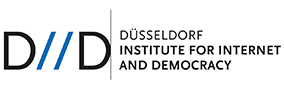The project commissioned by the Federal Office for the Safety of Nuclear Waste Management (BASE) entitled “Possibilities and limits of digital participation instruments for public participation in the site selection process (DigiBeSt)” was concluded in summer 2023 with a workshop at the BASE premises in Berlin. The final report (only available in german) on the project has now been published.
The project was carried out in cooperation with the nexus Institute from February 2022 to July 2023. At the heart of the project was the question of how the younger generation (under 30s) can be involved in the search for a final storage site for highly radioactive waste in a way that is appropriate for the target group and what opportunities digital participation formats offer for this. In order to answer these and related questions, a three-stage approach was chosen in the project, which steadily consolidated the findings in dialog with the target group and participation experts: First, the aim was to learn from scientific findings. To this end, a literature review was conducted to review the basic principles of participation theory and relevant explanatory approaches and empirical findings on patterns of political (online) participation. Building on this, an impact study was prepared. Focus groups were conducted for this purpose. The aim was to learn from other participation processes that have structural similarities to the BASE public participation process.
Within the focus groups, discussions were sought with the target group as well as with initiators of participation processes and specific questions were asked about the conditions for the success of digital youth participation. In a third step, the results from the literature review and the impact study were discussed in a two-day workshop with experts from science and participation practice. The aim was to learn from participation experts. The expert workshop also developed prototypes for information and participation formats that BASE could use in future as part of public participation. Finally, the key findings from the project were recorded in a final report (only available in german) and translated into recommendations for action for the BASE. Overall, it is clear that there are many ways to support the involvement of young people in (digital) participation tools for the site selection process. This requires a high level of resources in the form of expertise, time, personnel and financial means. However, there is still a lack of empirically verified findings on the costs and benefits of individual measures and their target group-specific effects. In concrete terms, this means that it is often not clear to the initiators which measures can be used to reach a target group at all and even less so which measure is most suitable.
The DigiBeSt project has identified various measures and concrete examples that have proven to be promising in terms of reaching young people and motivating them to participate, both in the light of empirical findings from the scientific literature and in dialog with the target group and participation experts from science and practice. The complete final report and further information on the project are available here.
Ansprechpartner
Dr. Katharina Gerl
Political Science

Dr. Katharina Gerl has been a research assistant at DIID at HHU-Düsseldorf since 2016. She studied Political Science (B.A.) at the University of Bremen and Political Communication (M.A.) at HHU-Düsseldorf. For her dissertation at the Chair of Political Science II at Heinrich Heine University, she studied the impact of digital media on political parties as organizations.
Her research interests lie in the areas of effects and acceptance of digital democratic innovations in politics and administration as well as of artificial intelligence for political opinion-forming and decision-making.
Projects
Contact
Jun.-Prof. Dr. Tobias Escher
Board, Computer Science, Political Science, Sociology

Tobias Escher leads a BMBF-funded junior research group investigating the effects of participation processes on the quality and legitimacy of political decisions, especially in the context of the transformation to sustainable mobility in the local context. Previously, he supervised the DIID as well as the NRW Forschungskolleg Online-Partizipation at the HHU-Düsseldorf as scientific coordinator. He is a social scientist and holds a PhD from the Oxford Internet Institute at the University of Oxford. He can also draw on his basic knowledge of computer science when assessing the possibilities and limits of digitization.
His research focuses on the evaluation of political participation online and offline. In particular, he addresses the question of the extent to which citizen participation contributes to higher quality and legitimacy/acceptance of political decisions. He has developed a teaching module on the theory and practice of online participation, from which, among other things, a project on student participation in teaching has emerged.
Photographer: ©Tilman Schenk


